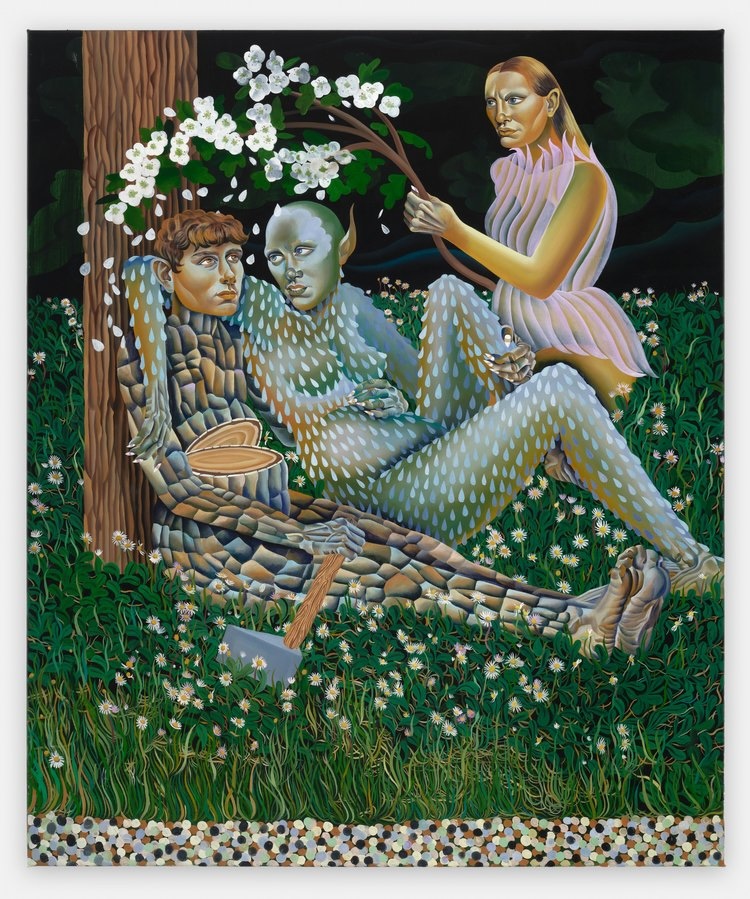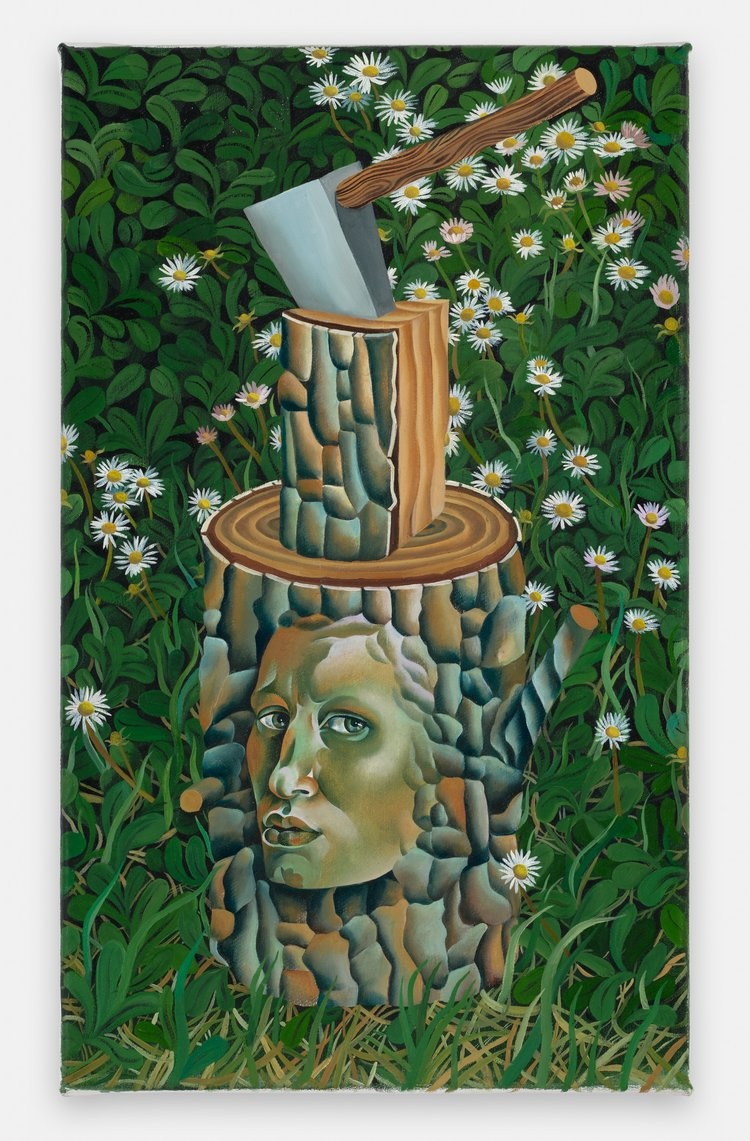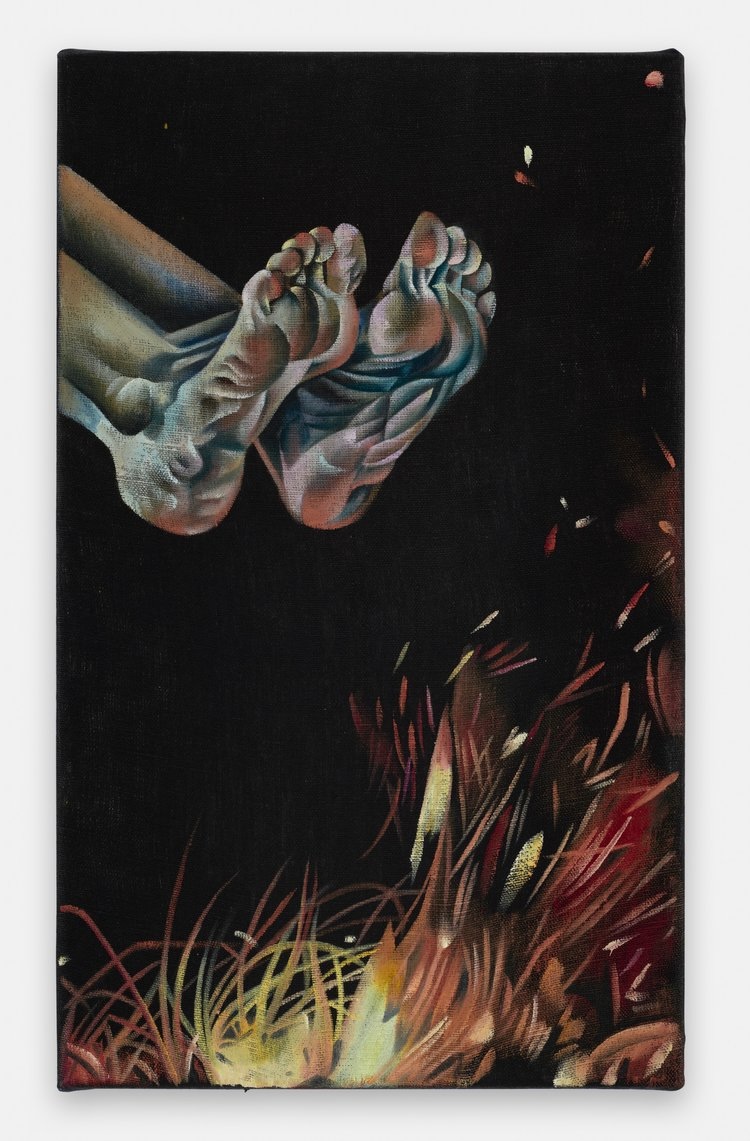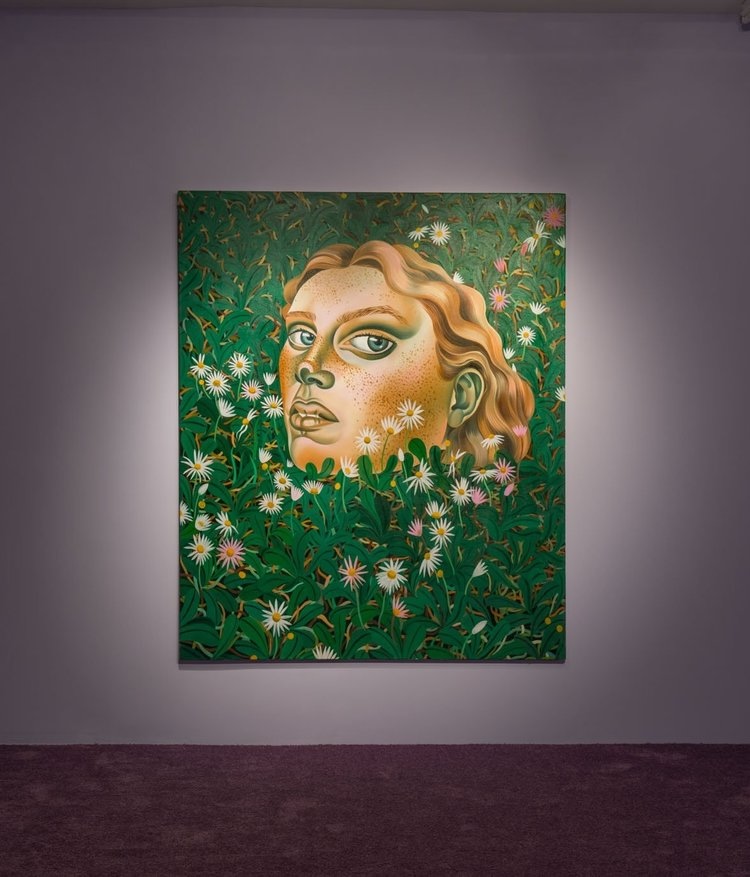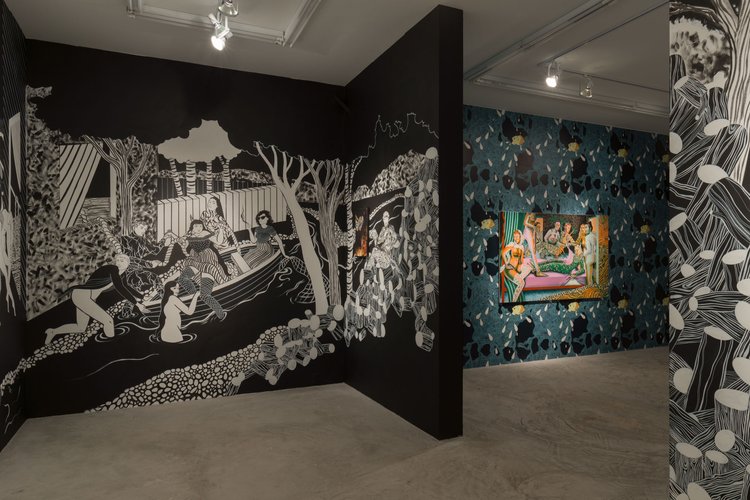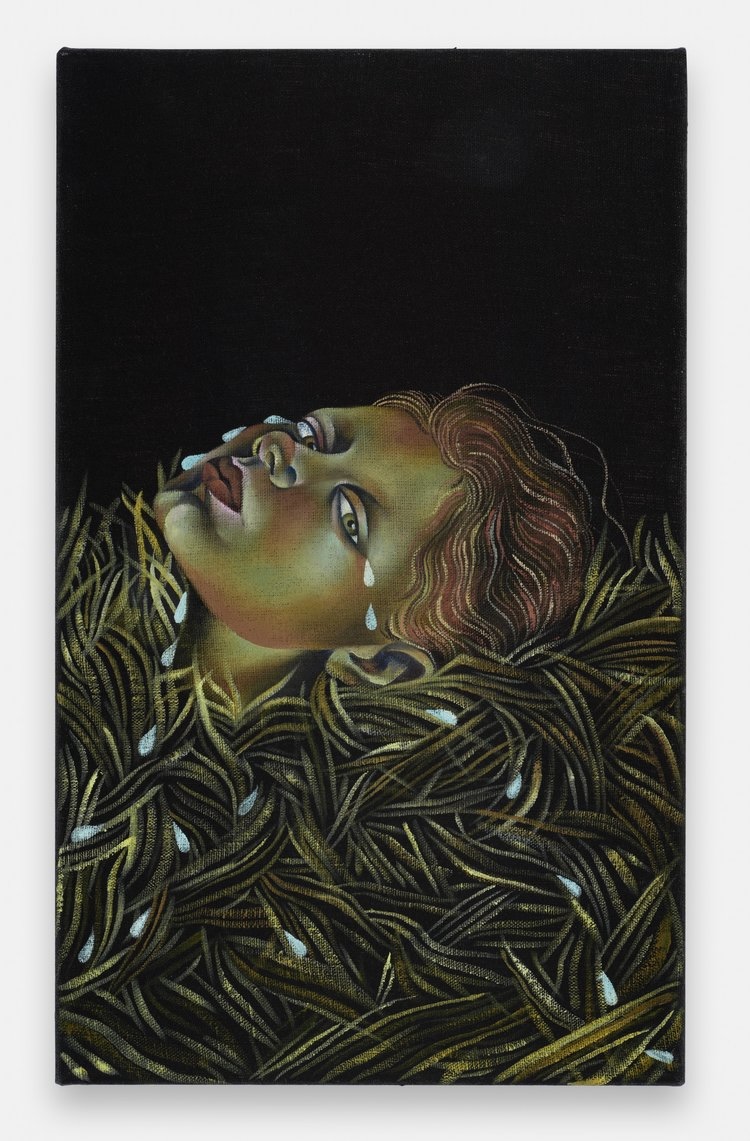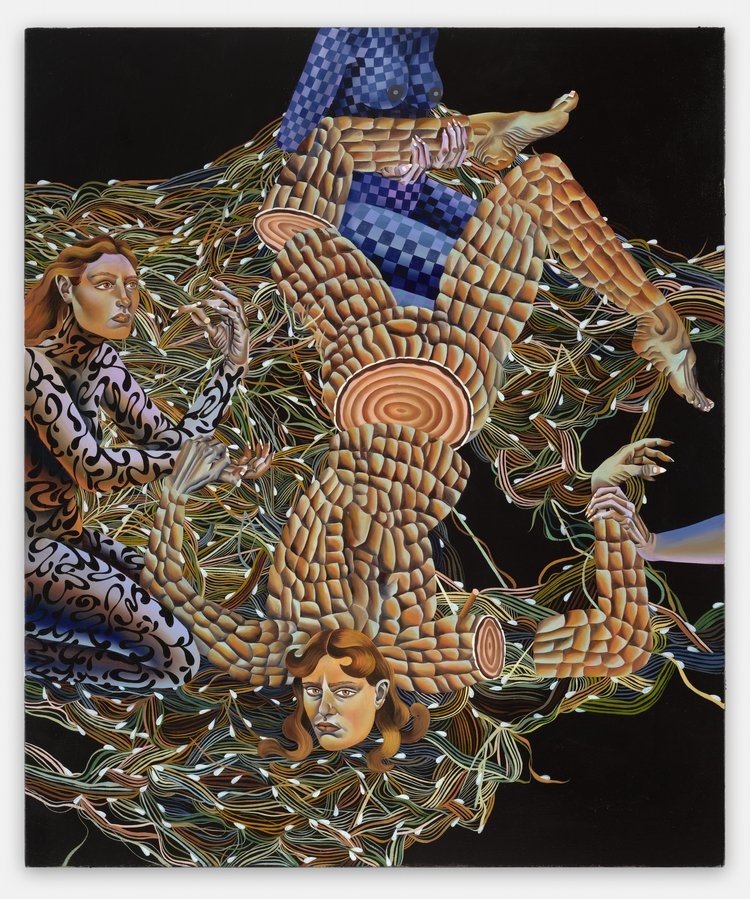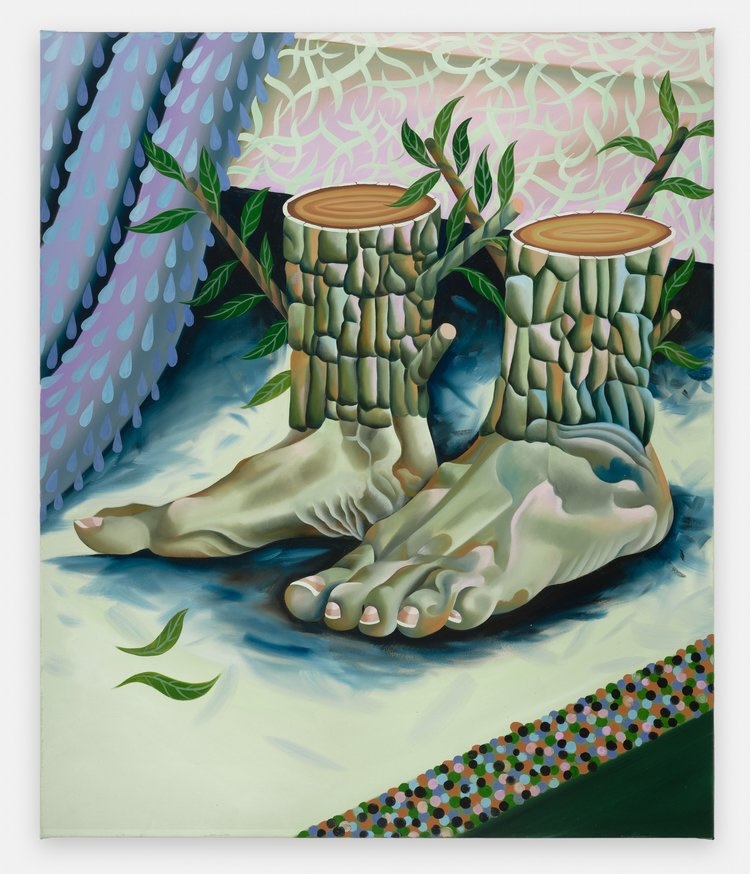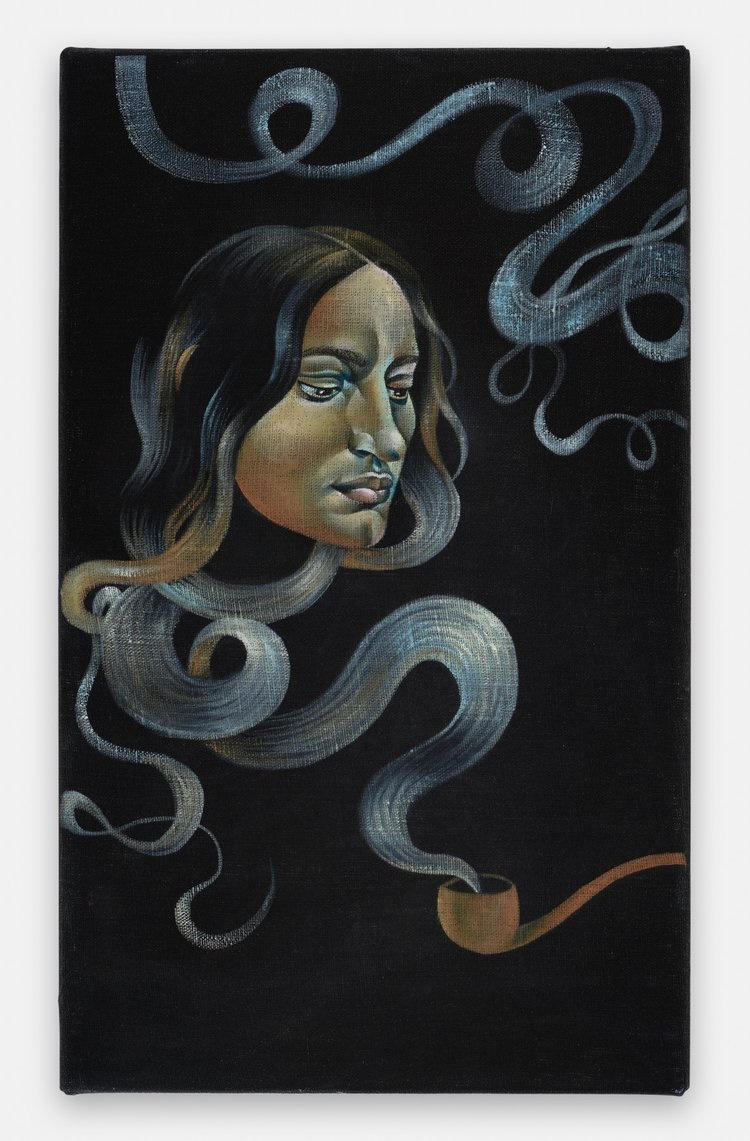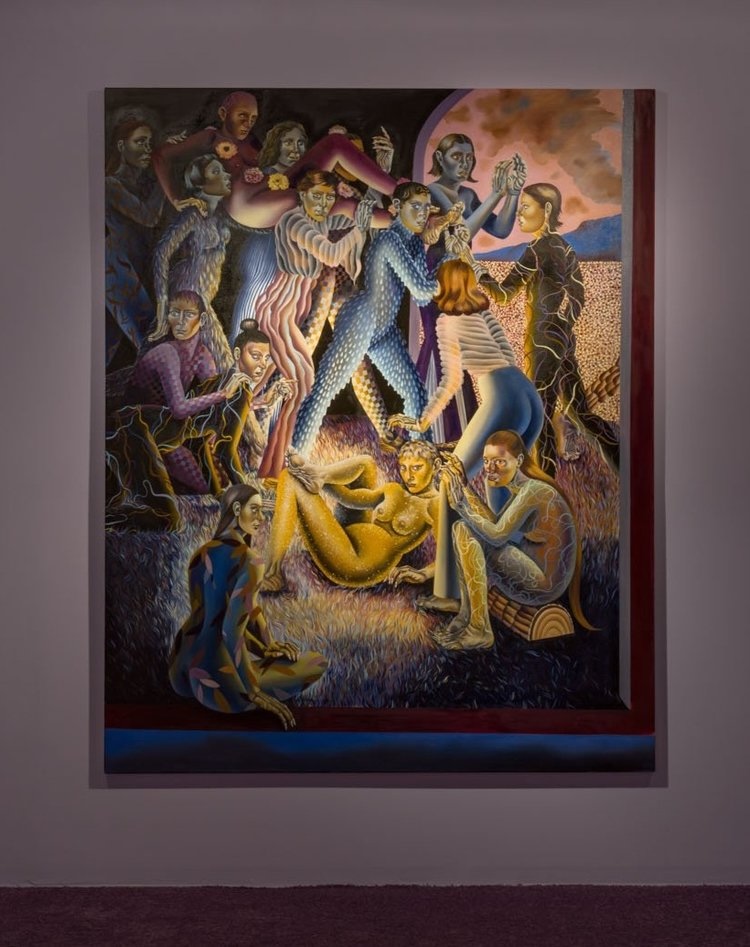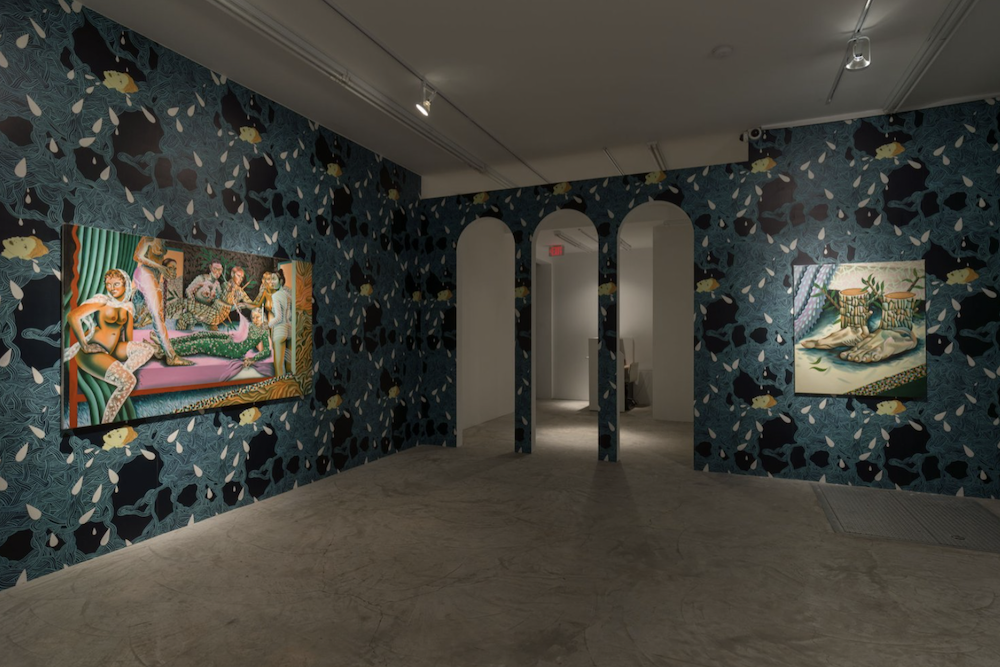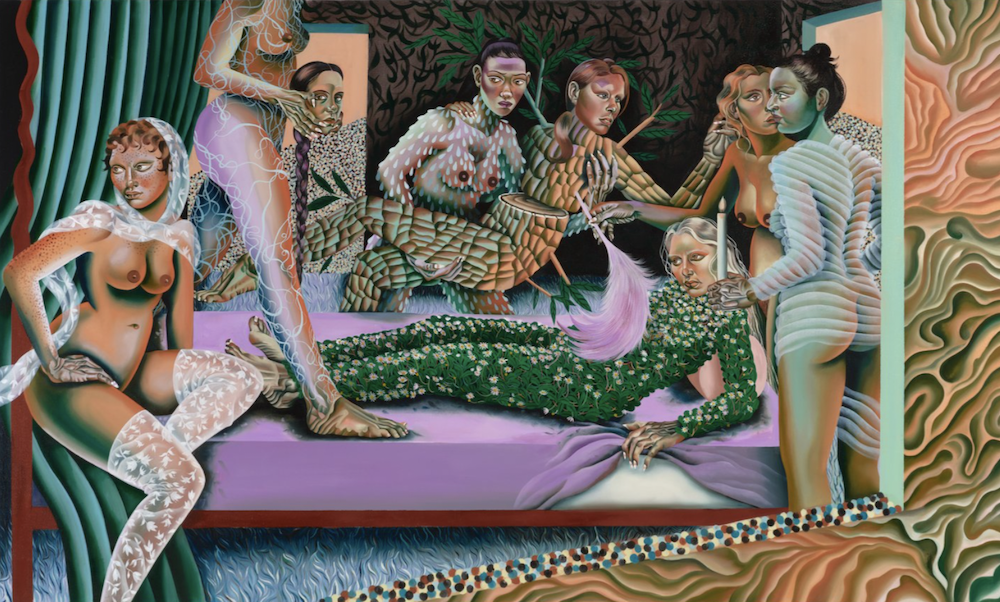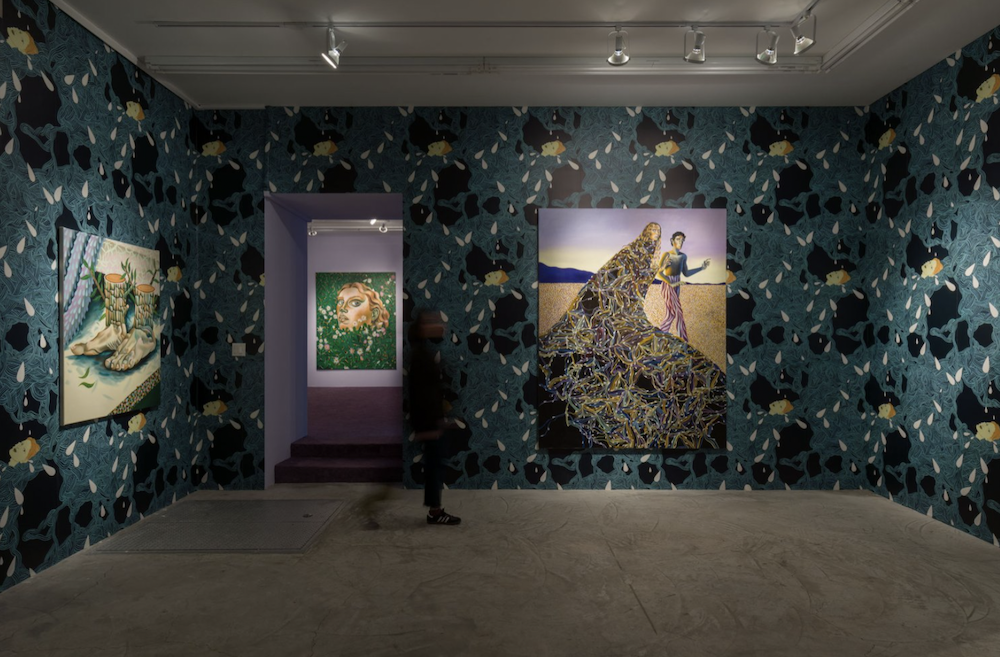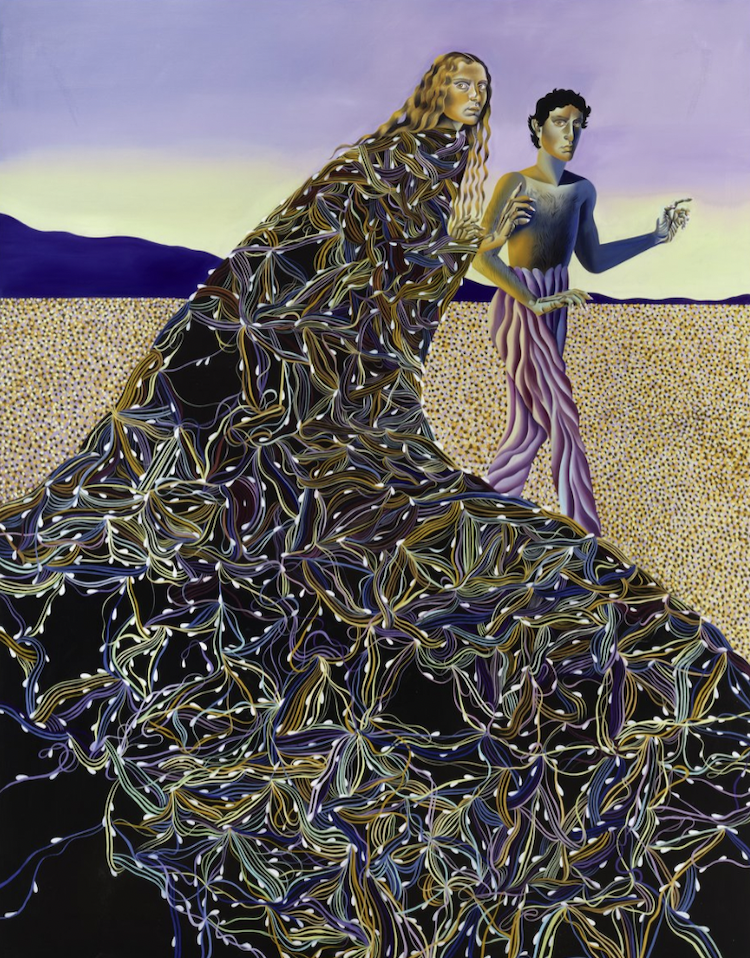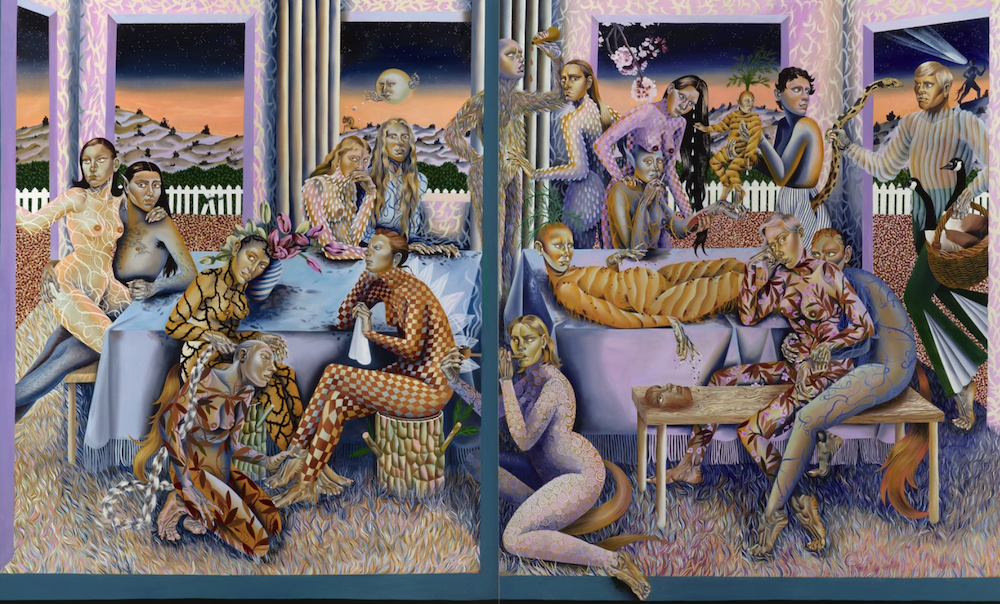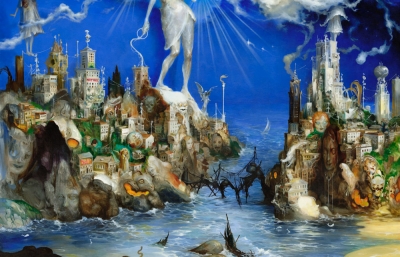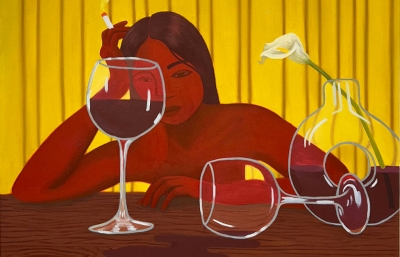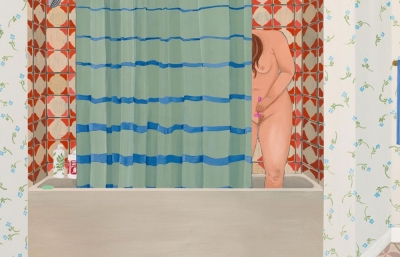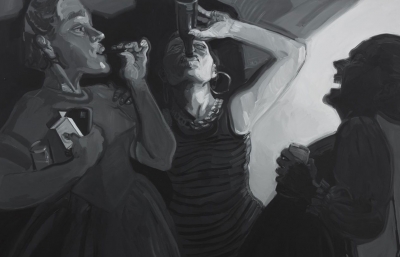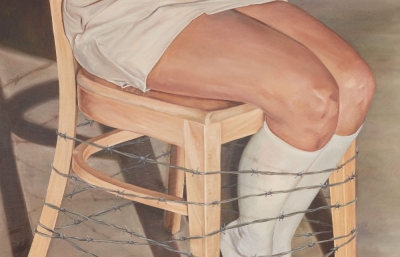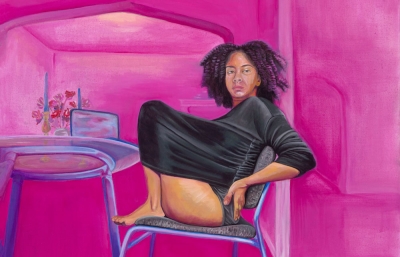Lyles & King is pleased to announce a series of new paintings by Jessie Makinson (b. 1985, London, UK), set within an immersive site-specific installation that will traverse both gallery spaces. Bad sleeper is the artist’s third solo exhibition with the gallery.
Bad sleeper premieres a transformational moment in the artist’s work: this experimental site-specific exhibition expands her painting practice into three dimensions. Spatial interventions break the white cube; a patterned wallpaper, hand-painted mural and a soft purple carpet supplant traditional white walls and concrete floors, while a detailed wooden screen punctuates the installation. “I’m interested in what happens to imagery across different surfaces,” Makinson writes.
Taken together, the paintings and their environment build a metatextual universe surfeit of art historical, literary, and cinematic references, that ranges from Italo Calvino’s Castle of Crossed Destinies to Sergei Parajanov’s iconic film The Color of Pomegranates. Most importantly, however, this new body of work could also be considered in part a visual translation of Polish author and recent Nobel winner Olga Tokarczuk’s epic novel The Books of Jacob. If that novel has been described as a work that embraces the infinite possibilities of language, Makinson’s exhibition explodes those possibilities into the world of the visual by synthesizing a vast collection of references and ideas in scenes constantly hinting towards a subversive and transgressive break.
At times used as a scold, and at others a nod to nighttime wanderings and personal logic, the title Bad sleeper points to a multitude of slippery and evasive perspectives that live within the paintings. Human, and non-human figures are in a constant state of renegotiation with each other and with nature. The Kings Limpet, for example, portrays an impossible figure being ritually bedded with a lawn, whilst others distractedly dust them. In this painting, Makinson turns the ideas of radical ecofeminism—the relationship between patriarchy and nature—into a complex, speculative, and energetic scene in which care sublimates into violence and erotic ambivalence. This environment of radical imagination and fertile possibility exposes the absurdity of objective reality by layering mischief and meaning upon the minutiae of details. Uncertainties come not from the figures themselves, but that they and their motives are unknowable. Drawing from cult stories, feminist folklore, history, and speculative fiction, the artist often depicts her cast of characters caught up in moments of serene agitation that question subjective ideas of care. In her painting Knowing your fingers, a tree figure falls and cracks into hay flecked with dew—but is caught and held by three others. In this fraught moment of violence and succor, familiar, recognizable forms soften the blows.
Bad sleeper makes a world for the paintings to live in. As in the canvases themselves, we intrude and are ignored. The figures' eyes follow us cat-like as we pass through their world, irrelevant to them. As in Castle of Crossed Destinies, the scene is set, and the stories intermingle before completely falling apart.



